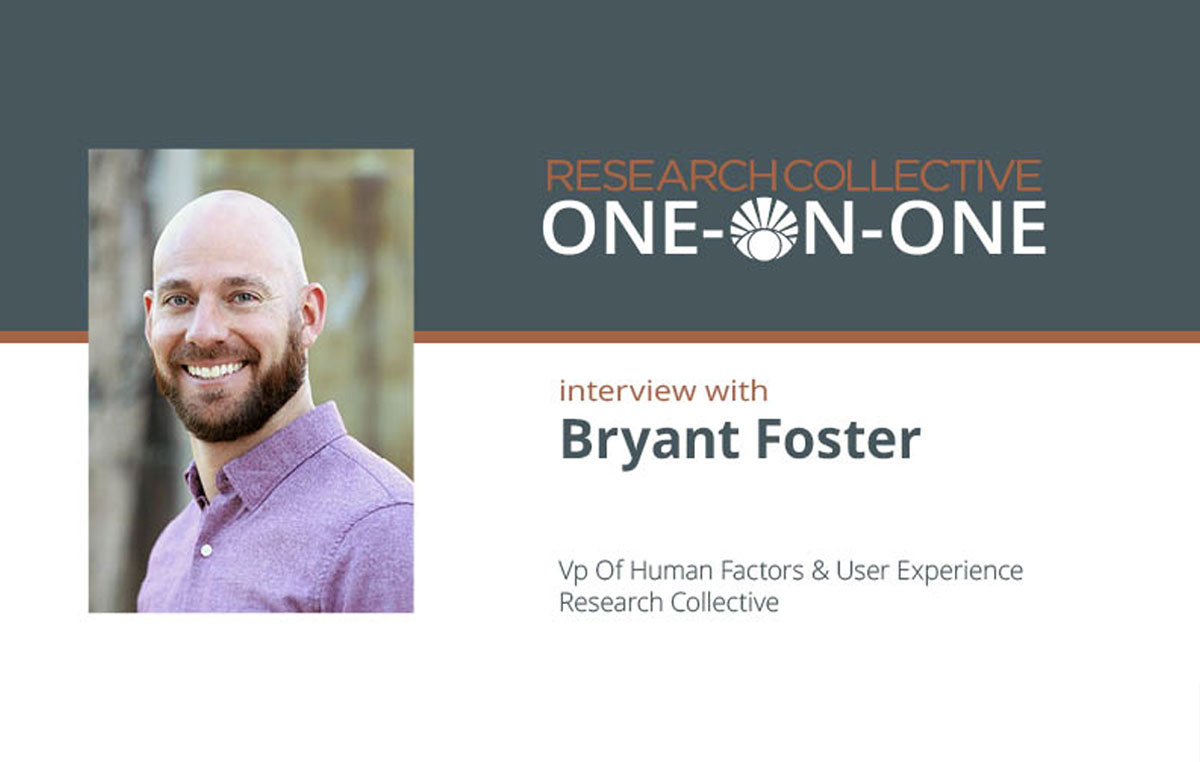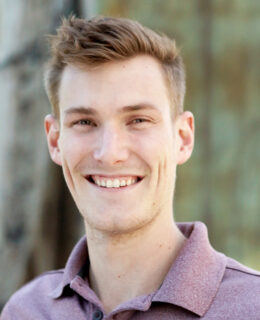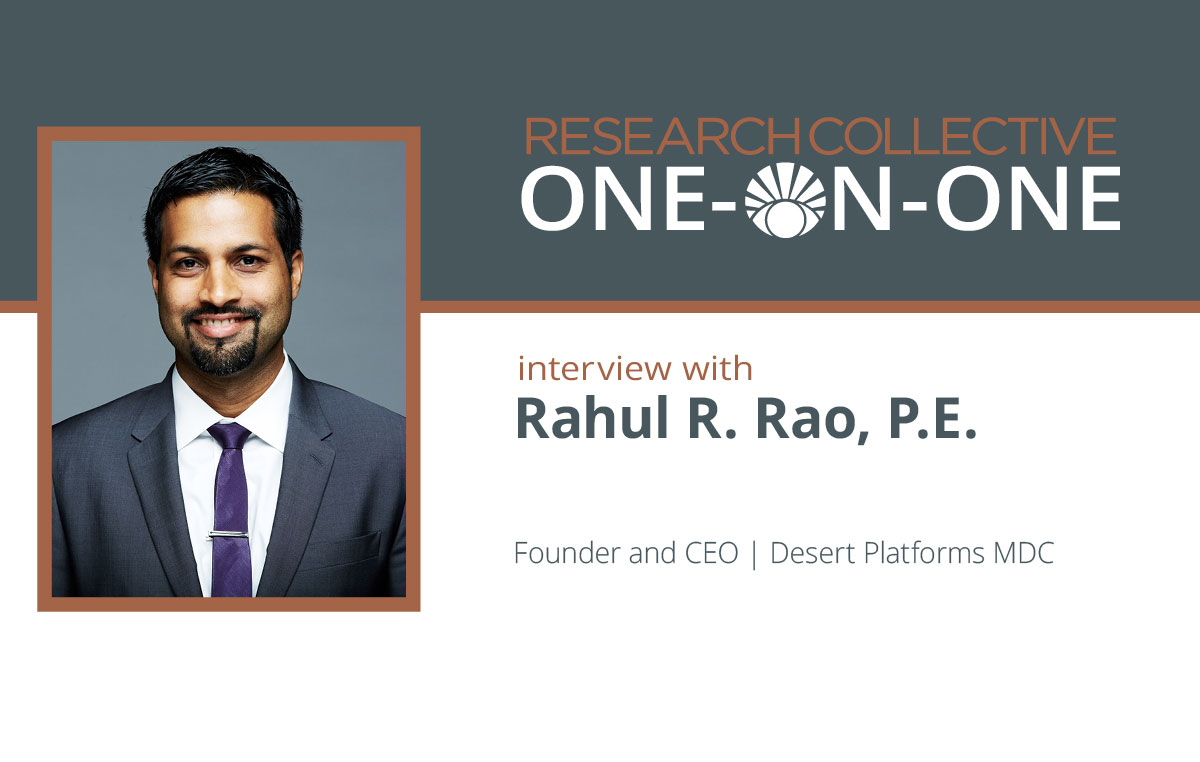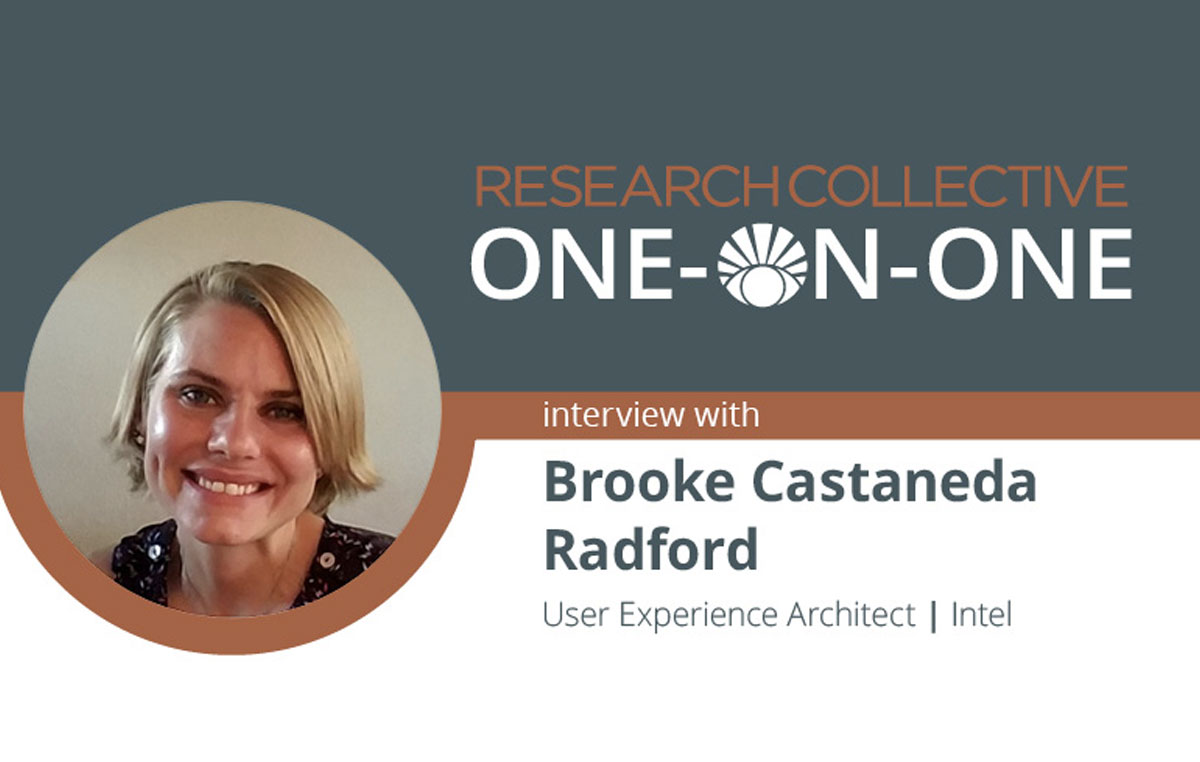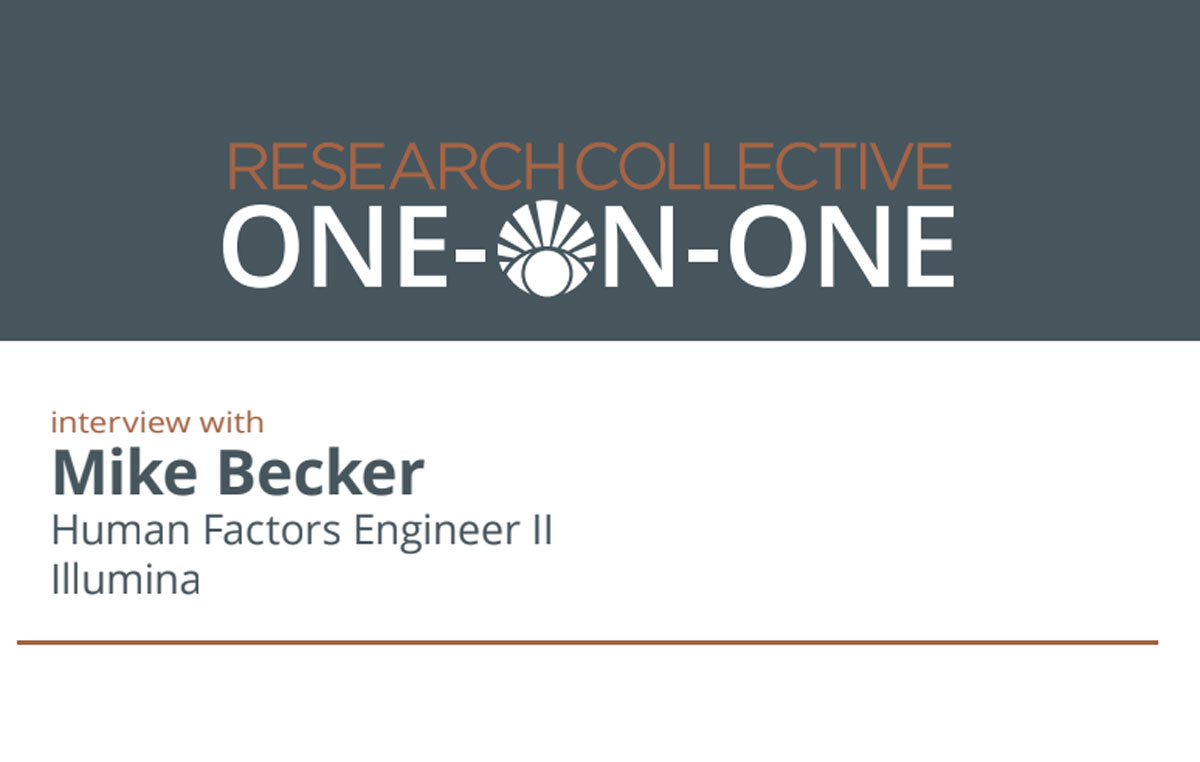Introduction
This month we are bringing in one of our own! Long overdue, we are pleased to have Bryant Foster as our one-on-one human factors expert!
Bryant is the Vice President of Human Factors and User Experience here at Research Collective. In the interview, he opens up about how he got to where he is today, makes recommendations for aspiring human factors professionals, and describes his ideal human factors project.
Without further ado… here’s what Bryant Foster has to say!
Research Collective: How did you get your start in human factors?
Bryant: I obtained a Bachelor’s degree in Spanish from Arizona State University in 2007, but wasn’t sure what I wanted to do after graduating. My plan was to study for the LSAT and prepare for law school. I wasn’t completely sold on the idea of becoming an attorney so I worked in my family’s business, real estate development, and continued to look for other career options.
I spent a lot of hours looking into all sorts of career paths and degree programs, and still remember the night I first learned about human factors and user experience. Immediately, I recognized that this was the career I had been looking for: it combined two things I liked a lot, and wanted to know more about — psychology and technology.
That night, I sent an email to the department chair of Arizona State’s human factors program (at the time it was called Applied Psychology), asking for some information about the program. He put me in touch with Dr. Russ Branaghan and Russ was nice enough to invite me in to meet at his office. I explained that I had a Spanish degree and that I wanted to apply for the Master’s program.
Some Prep Work
He told me that I would need to take a few psychology prerequisites, then take the Graduate Record Examinations (GRE) before submitting an application. I immediately registered for a summer statistics course and took Advanced Statistics, Research Methods, Introduction to Human Factors, and Sensation & Perception that Fall semester. Towards the end of the semester I took the GRE and I was enrolled in the Master’s program that Spring.
Right before I graduated with a Master’s degree in Applied Psychology in the summer of 2012, a fellow student, Mike Kuzel, introduced me to a human factors group at Google working on their self-driving car. I took a contract position at Google and got to work on some fun projects with amazing people. I really enjoyed my time there, but left to return to Arizona and to work as an independent consultant for about 8 months before joining up with Russ and Tonya to co-found Research Collective.
Research Collective: What’s on your mind these days?
Bryant: As I write this, I am just leaving the Human Factors and Ergonomics Society’s Healthcare Symposium. It was a wonderful time catching up with friends I have made along the way, meeting new people, and learning from peers in the industry. We have a really cool community, full of people who are motivated to improve people’s lives. I feel extremely fortunate to work in this field with so many amazing people, and have a rejuvenated desire to be more involved in the community, especially in an effort to bring us closer together.
Research Collective: What recommendations do you have for young professionals trying to get their start in human factors or UX?
Bryant: I am fortunate to co-lead a mentorship program for ASU students that allows me to offer my advice to students and new human factors professionals often. There is one thing I tell anyone willing to listen: actively look for opportunities to get involved in research, professor’s labs, internships, volunteering opportunities, etc.
Some of my best opportunities have come from just being in the right place, at the right time, and being willing to say yes. I highly recommend finding internships while in school, even if they are not at the company you want or doing exactly what you want. That experience will do nothing but benefit you.
Research Collective: What have been some of your favorite projects?
Bryant: Oh boy, this is like asking me which of my kids I like best! It really depends on the day. I can honestly say I enjoy all of the projects I have worked on. Like my kids, they may not be super fun in a given moment, but looking back, I have fond memories of the work, the people, the participants, even the travel.
I will say that I really enjoy getting to go into the places that people live and work for contextual research. The logistics are always challenging and you never know what you might encounter, but I think that is part of the fun. Also, it just feels more like real research when I go into the participant’s comfort zone as opposed to bringing them into a controlled environment.
Research Collective: Describe your ideal human factors consulting project.
Bryant: Ideal, to me, is any time human factors has a seat at the table. I love being in the regular engineering and design meetings and representing the users as decisions are made.
I recently received an unanticipated call from a client, the program manager. She explained that she had to make a quick decision about the LED indicators on her device’s batteries. She had told the engineers how the LEDs should perform, but she wanted to double-check her decision with me. I agreed with her decision for the LED design and the engineers got to work!
What makes me so happy about this situation is not that she wanted my approval, but that through her company’s research efforts to understand the device users’ needs, she knew how the LEDs should be designed to meet those needs. She considered the usability of the LED indicators as well as all of the other things she must take into consideration like cost, reliability, availability, etc. That is not something you see every day.
Bryant Foster | Vice President of Human Factors and User Experience | Research Collective

As Vice President of Human Factors and User Experience, Bryant guides human factors efforts for medical device manufacturers, pharmaceutical companies, automakers, consumer productmanufacturers, and more. Bryant has guided surgical instruments, combination products, home-use devices, and OTC products to FDA clearance or approval. Bryant’s automotive research experience includes in-vehicle infotainment systems, automated driving systems, and audio/visual navigation tools.
